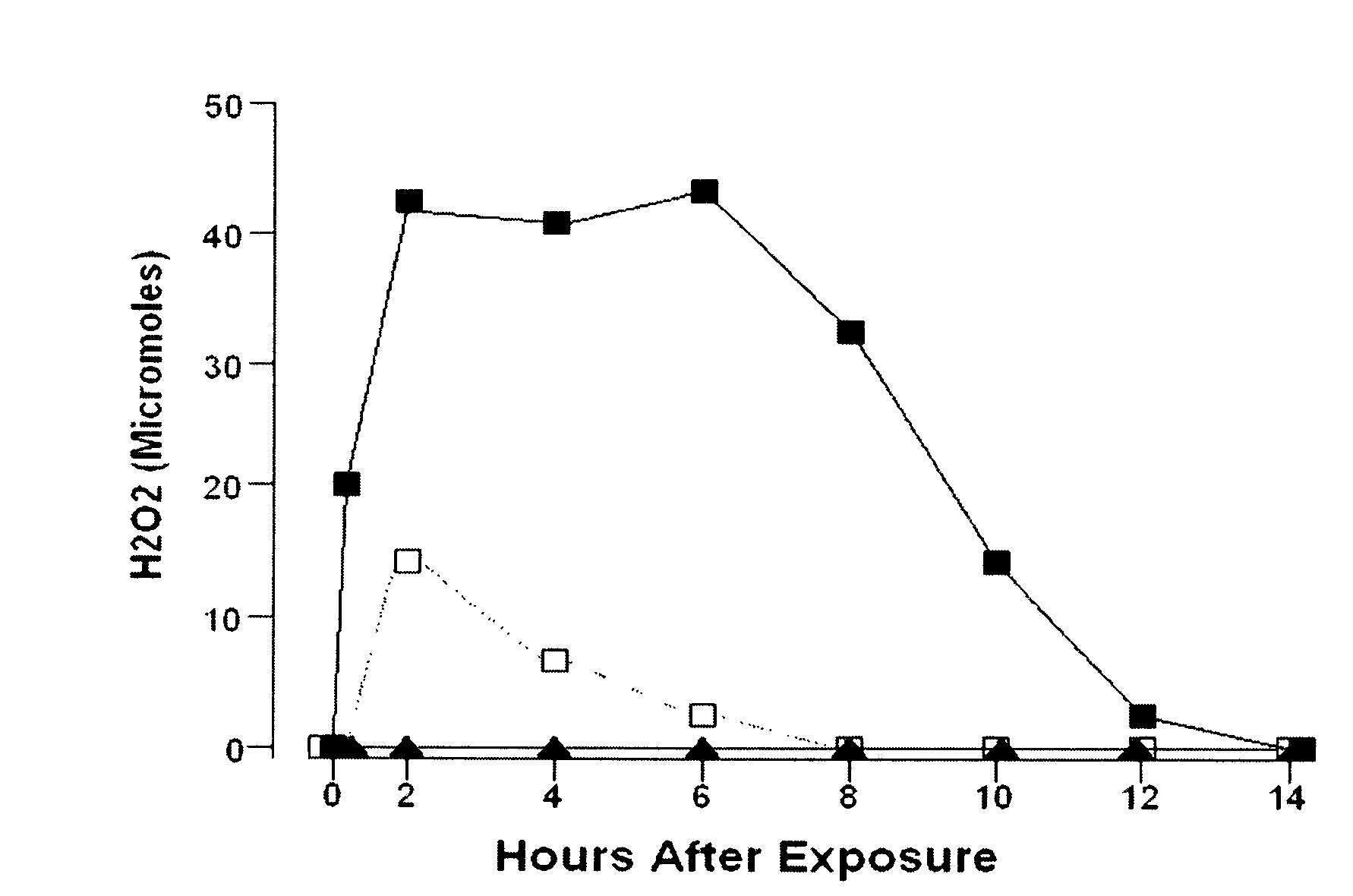Bioimmune-aggressin composition for suppression of xanthomonad infections in agriculture crops
a technology of xanthomonad and composition, applied in the direction of fungicides, plant/algae/fungi/lichens ingredients, biocide, etc., can solve the problems of limiting the use of such sprays, affecting the health of citrus grove owners, and affecting the quality of citrus groves,
- Summary
- Abstract
- Description
- Claims
- Application Information
AI Technical Summary
Benefits of technology
Problems solved by technology
Method used
Image
Examples
example 1
In Vitro Screening of Hypersensitivity Responses
[0068] Hypersensitivity responses toward this invention and challenges of pathogens were performed on Citrus spp. protoplasts. Callus protoplast were derived from shoots of Citrus sinensis, C. paradisis, and C. limon and routinely prepared in our laboratory following established procedures [Kyte, L and Kleyn, J (eds.) 1996. Plants from test tubes: An introduction to microporpagation. 3rd Edition. Timber Press: Portland, Oreg.]. Callus-derived cells derived from explanted material of desired Citrus spp., and protoplast are formed from the callus-cell cultures following digestion with 3% cellulase; 0.5% macerase in solution of 0.5 M mannitol and sucrose having a final osmotic pressure of 825 m mole / kg. Recovered protoplast were grown in KM8p protoplast medium.
[0069] Freshly isolated protoplast (2O2) from protoplast as positive and negative controls. Hydrogen peroxide production was measured in the culture medium of experimental and con...
example ii
Control of Xanthomonad-Induced Leaf Spot Disease of Nepeta cataria
[0075] Catnip (Nepeta cataria) is subject to leaf spot disease by a variety of bacteria including X. campestris. In order to test the effectiveness of our admixture on xanthomonad-disease, we used a catnip model. In a controlled green house located in Willis, Tex., we planted 28, 2 month old Neptea cafaria in pots. The plants were divided into experimental and control groups each having 4 plants per group. Forty-eight hours prior to experimentation, the groups were placed in saturated dew chambers.
[0076]Xanthamonas campestris was grown under agitation in nutrient broth for 48 hours, and diluted to a suspension of 106 CFU / mL as determined by plating methods. Tween 20 was added the bacterial suspension at a final concentration of 0.5%. Using a hand-held mister, plants were sprayed with the bacterial mixture. Plants were monitored every other day for evidence of disease.
[0077] Within two weeks, small brown speaks char...
example 3
Control of Xanthomonad Killing of Poa Annua
[0084] In addition to testing the effects of xanthomonad infection of catnip, we utilized the annual blue grass, Poa annua, to test the effects of our admixture on this grass' infection with Xanthomonas campestris [pv.]poannua (obtained as XPO from Eco Soil Systems). In this study, Poa annua were grown in open Phytatray (Sigma). The trays were separated into controls (N=10 trays) and experimental groups (N=10 trays). After one month of growth, experimental trays were sprayed with X. campestris [pv.]poannua according to manufacture's directions. Following infection, we waited for the appearance of injury to the grass, then sprayed them with Formula V as given above. Controls received either no Formula V or SS-9 only. Results are presented in Table 7.
[0085] As shown in Table 7, Formula V protected the grasses from progression of the disease. The effect on grass expressing minimal injury were afforded protection within one week after sprayin...
PUM
 Login to View More
Login to View More Abstract
Description
Claims
Application Information
 Login to View More
Login to View More - R&D
- Intellectual Property
- Life Sciences
- Materials
- Tech Scout
- Unparalleled Data Quality
- Higher Quality Content
- 60% Fewer Hallucinations
Browse by: Latest US Patents, China's latest patents, Technical Efficacy Thesaurus, Application Domain, Technology Topic, Popular Technical Reports.
© 2025 PatSnap. All rights reserved.Legal|Privacy policy|Modern Slavery Act Transparency Statement|Sitemap|About US| Contact US: help@patsnap.com

